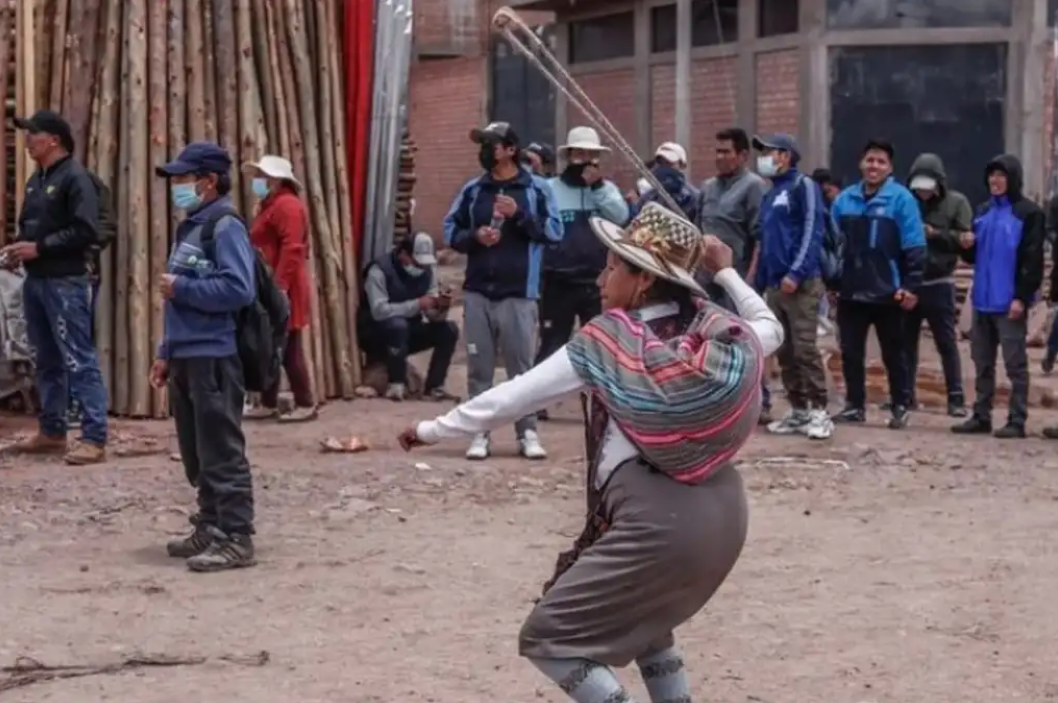The Situation of Poor Women in Peru

Poor and working women, especially in rural areas, find themselves in the struggle against the murderous government of Dina Boluarte and the Congress, suffering the repression unleashed by it.
However, in addition, they carry on their backs the weight of the economic, social and political crisis that envelopes the country, subjected to lower paid and precarious jobs and less access to education and health, in addition to taking on a greater amount of unpaid work in the home compared to their male partners or family members. This, not to mention the violence that is directly exercised against them at home or by their partners and ex-partners, which often ends in their murder.
According to the report “Gender Gaps 2022” by the National Institute of Statistics and Informatics (INEI), by 2022 Peru will have over 16.6 million women and 16.4 million men. This indicates that women constitute 50.4% of the national population.
And of the total poor population, which after 2020 rose to 30%, 51.4% are women.
Of these, 32% of women over 14 years of age have no income of their own, compared to 14% of men of the same age. In Apurimac, one of the epicenters of the mobilizations in the south, this situation affects 40% of women.
900,000 young women neither study nor work. This figure is aggravated by the fact that 67% of them do not have the skills to access quality jobs. The wage gap is around 25%.
There are 17% more men in paid work, receiving, on average, 25% more salary than their female counterparts for the same work. Most of the female workers are in microenterprises with a maximum of 5 workers. And they are concentrated in the service sector (36.4%), commerce (27.5%) and agriculture (25.7%). According to the most recent reports, 80% of women in Peru work in the informal sector.
But inequalities do not stop there. For example, Peruvian women spend 39 hours and 28 minutes a week working in the home (unpaid) compared to 15 hours and 54 minutes for men. That is, 23 hours and 34 minutes more. According to Oxfam, by 2021, Peruvian women’s unpaid work would be equivalent to 20% of GDP.
This situation is manifested in women’s health. In 2021, 44.3% of women reported suffering from some permanent ailment, 9.7 percentage points more than men (34.6%).
Breast and cervical cancer are among the leading causes of female mortality and could be treatable with early diagnosis of the disease. Of the total number of female deaths registered in 2019, 22% were caused by this disease.
The second leading cause of death in women is influenza and pneumonia, which accounted for 12.2% of deaths in women and 10.7% in men.
Illiteracy among women is almost three times higher than among men, reaching 7.6% of the female population compared to 2.7% of men. This rate, however, rises above 10% for women in the mountainous Andean regions, reaching 19.5% in Apurimac.
Adolescent motherhood is 8.9% at the national level. In Amazonian regions such as Ucayali and Loreto, it rises to 25% and 18%, respectively. At the national level, 28% of these adolescents come from low-income sectors.
And as if this were not enough, the national police, which today savagely represses the population that goes out to protest, only managed to locate 48% of the 11,524 women registered as missing last year. That is, 5,558 women returned home. Nor has it done much to solve the 137 femicides reported during 2022. 73% of the murdered women were under 40 years old.
This is the situation in which women find themselves in Peru. Therefore, it is not surprising that they are side by side in the struggle that is shaking the country. And that it is urgent that the working class and poor people take up the banners of poor women as part of their demands on the road to conquering the solution to the national political problems.




